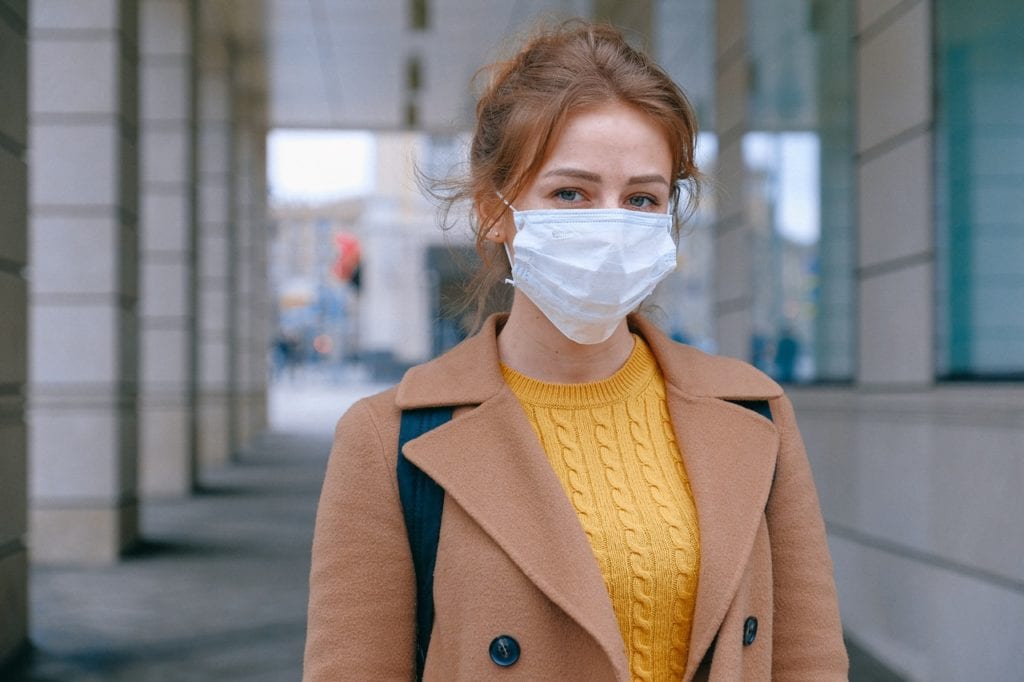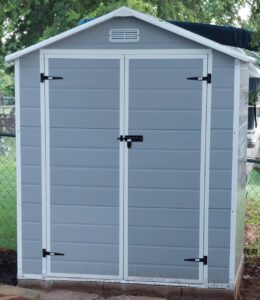On Friday, April 3rd, the CDC began recommending all Americans wear a cloth mask out in public. An excerpt from the CDC website states, “CDC recommends wearing cloth face coverings in public settings where other social distancing measures are difficult to maintain (that is, grocery stores and pharmacies) especially in areas of significant community-based transmission.”

The reason the CDC is recommending cloth masks instead of surgical masks or N95 respirators is that these are in short supply and must be reserved for healthcare workers and medical first- responders.
Both surgical masks and cloth masks are not designed to protect the wearer but to prevent someone who is asymptomatic from spreading the virus. However, surgical masks afford somewhat more protection than typical cloth masks.
Researchers have taken up the task of identifying the best materials to use for a mask.
In recent studies, HEPA furnace filters were found to be quite effective, as were vacuum cleaner bags, layers of 600-count cotton pillowcases and fabric similar to flannel pajamas. Stacked coffee filters had slightly lower effectiveness. Scarves and bandanna material had the lowest scores but still captured a small percentage of particles.
If you do not have any of the materials listed, hold your fabric up to bright light. If the light passes easily through the fabric and you see light between the fibers, it is not a good candidate.
The biggest challenge of choosing a homemade mask material is to find a fabric that is dense enough to capture viral particles, but “breathable” enough that it can be worn.
The problem with air filters is that they potentially could shed small fibers that can be inhaled. If you want to use a filter, you should place the filter between two layers of cotton fabric. Unless the filter material is removable, the mask will not be washable.
One study showed that when certain common fabrics were used, two layers offered much less protection than four layers. Studies have also shown that using different materials for each layer improves the efficacy of the mask. Keep in mind, besides filtration, breathability is critically important. If the fabric is too thick, condensation from your breath may result in the inside of the mask becoming wet. This is a risk for germ transmission.
Another study showed that masks made from 100 percent cotton quilting fabric proved to filter out viral particles as well as, or better than surgical masks, testing in the 70 to 79 percent range. Thinner, less dense fabric showed filtration as low as one percent. Thread count in woven fabric is important. The higher the thread count, the more efficient the filtration. The best-performing woven cloth masks were constructed of two layers of high-quality, heavyweight “quilters’ cotton,” a two-layer mask made with thick cotton batik fabric, and a double-layer mask with an inner layer of cotton flannel and outer layer of plain cotton.
Sewing a flexible metal strip (like floral wire or pipe cleaner) into the top of the mask will assure conformity around the nose.
Making a mask based on the structure of a surgical mask, the outer layer should be water-repellant, and have good air permeability, and possess static property. Certain materials carry a negative charge which helps to repel pathogens that are negatively charged, such as SARS-CoV-2. The middle layer should provide pathogen filtration, good air permeability, and possess static property, and the inner layer should be a moisture-absorbent comfortable material. Polyester and polypropylene are good choices for outer layer material. The middle layer can be made with HEPA/HVAC filter material, meltblown nonwoven fabric, or if none of these are available, blue shop towel fabric. The filter material should be placed in a pocket that is sewn into the inner layer, making it easy to change after each use.
A Taiwanese doctor has instructions for making a cloth mask with removable filter material in the middle. The filter material is “meltblown” nonwoven fabric. This cloth may be found online through various retailers. The link to the instructions is listed below with other instructional links.
Filti, a company in Oklahoma, is taking remnants from high-tech nanofiber material made by the parent company, NXTNano, and turning them into material that can be used to make masks with near-N95 performance. One side of the material is softer to make it more comfortable to wear against the face. The material is not washable. A link to the company’s retail website is listed below with other links.
Elastic has been nearly impossible to find. An American company, Atwood Rope, sells elastic that is designed for surgical masks. The link to their website is listed below with other links.
There are a few rules about putting on and taking off a mask. Wash or sanitize your hands, then wash your face and let it dry before you put on your mask. Avoid touching your mask with your hands, and if you do, wash your hands immediately. You should always wash or sanitize your hands after applying or removing your mask. When you remove your mask, take it off only using the ear straps.
To store your mask after using it and before washing, place the mask in a zip-lock bag, to avoid possible contamination of the surface upon which it is placed. After washing and drying the mask, place it in a new zip-lock bag for storage before using it again. If you need to take the mask off to eat, place the mask in the zip-lock bag from which you took the mask. Mark which side of the bag is the inside of the mask. This will keep you from placing the outside of the mask against your face when you reapply it.
A 2018 survey shows people use their phones up to 52 times per day and that phones are 10 times dirtier than a public toilet, therefore don’t put the phone up against your mask. Placing a contaminated phone up to your mask contaminates the mask. Gently wiping down your phone with a 70 percent isopropyl alcohol or a disinfectant wipe is enough to remove the virus. Be careful not to place your phone on surfaces and then apply it directly to your face. Using the speakerphone function is the best option when using your phone with a mask. Pulling your mask down beneath your chin potentially contaminates your mask.
The CDC recommends cleaning your cloth mask by laundering it. Washing the mask in hot water, with a small amount of bleach is advisable. Place in the dryer, set on high heat. Detergents with fragrance, fabric softeners, or harsh chemicals should not be used directly on the mask to avoid skin irritation.
The CDC does not officially endorse this method, but there is limited and mostly anecdotal evidence that placing a cloth mask in the microwave can sanitize it. DO NOT place a mask that has a metal strip in a microwave oven, it will damage the oven. Also, some materials may catch fire when placed in a microwave oven. Some studies suggest that three minutes at 800 watts will disinfect it. Others say that you can sanitize the mask by steaming it over a container with holes in the lid with 50ml (3+ Tablespoons) of water in the microwave.
Still another study simply said the mask must be brought to a temperature of 167 degrees.
When you sneeze or cough, do so into a flexed elbow, EVEN if you are wearing a mask. If someone coughs or sneezes directly on you, immediately turn away from them, remove your mask, and place it in your bag, then wash your hands and face. If you are wearing a disposable mask, discard it, and wash your hands and face.
If you buy a mask or someone gives you a mask, wash and dry it before using it.
Wearing masks alone is not enough to stop the spread of COVID-19. We must practice social distancing, wash our hands, only go out for essential needs, and follow all guidelines and ordinances that are announced.
Find links to make your own mask at the following links:
https://www.goodhousekeeping.com/health/a31902442/how-to-make-medical-face-masks/
https://www.tomsguide.com/how-to/how-to-make-a-face-mask-at-home










